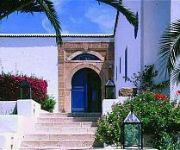Facts and Data
Webpages:
Official Unesco Page
Basis Data:
Unesco World heritage since: 1979
Size of heritage: 616 ha
Coordinates:
Longitude: 10,323°
Latitude: 36,853°
Summary
Carthage was founded in the 9th century B.C. on the Gulf of Tunis. From the 6th century onwards, it developed into a great trading empire covering much of the Mediterranean and was home to a brilliant civilization. In the course of the long Punic wars, Carthage occupied territories belonging to Rome, which finally destroyed its rival in 146 B.C. A second – Roman – Carthage was then established on the ruins of the first.
Location on Map
Show bigger map on Openstreetmap
Archaeological Site of Carthage
The Archaeological Site of Carthage, located in the District of Tunis, Tunisia, is a UNESCO World Heritage site that holds immense historical and cultural significance. This ancient city was once the capital of the powerful Carthaginian Empire and played a crucial role in shaping the Mediterranean world during antiquity.
History
Carthage was founded by Phoenician settlers in the 9th century BC and quickly grew into a prosperous trading hub. The city flourished under the rule of the Carthaginians, who established a maritime empire that rivaled Rome. Carthage's strategic location allowed it to control trade routes and establish colonies across the Mediterranean.
However, the city's prosperity led to conflicts with Rome, resulting in the three Punic Wars. The most famous of these wars was the Second Punic War, during which the Carthaginian general Hannibal famously crossed the Alps to attack Rome. Despite Hannibal's military genius, Carthage was eventually defeated by Rome in 146 BC, leading to its destruction and the establishment of a Roman colony on its ruins.
Current State
Today, the Archaeological Site of Carthage stands as a testament to the city's rich history and the civilizations that once thrived there. The site covers an extensive area, including the ancient city, the Roman amphitheater, the Antonine Baths, and the Punic ports.
One of the most remarkable features of the site is the Tophet, an ancient burial ground where urns containing the ashes of sacrificed children were discovered. This grim discovery sheds light on the religious practices of the Carthaginians and their devotion to their deities.
The Roman amphitheater, built in the 2nd century AD, is another highlight of the site. This well-preserved structure once hosted gladiatorial games and other spectacles, showcasing the grandeur of Roman entertainment.
The Antonine Baths, constructed during the reign of Emperor Antoninus Pius in the 2nd century AD, were once a magnificent complex of public baths. Although only ruins remain, they provide a glimpse into the opulence and sophistication of Roman engineering and architecture.
The Punic ports, which were crucial to Carthage's maritime power, are also part of the archaeological site. These ancient harbors were once bustling with trade and naval activity, connecting Carthage to the wider Mediterranean world.
Efforts have been made to preserve and protect the Archaeological Site of Carthage. Excavations and restoration projects have been carried out to ensure the site's longevity and accessibility to visitors. The site's inclusion on the UNESCO World Heritage list has also helped raise awareness about its historical significance and the need for its preservation.
Visiting the Archaeological Site of Carthage allows visitors to step back in time and explore the remnants of a once-great civilization. It offers a unique opportunity to understand the rise and fall of Carthage and its enduring impact on the Mediterranean world.
Hotels and places to stay
ZZ-TERM-VILLA DIDON CARTHAGE
Dar El Marsa
La Villa Bleue
MOVENPICK HOTEL GAMMARTH TUNIS
Dar Said
Corail Suites Hotel
Caribbean World Gammarth
Golden Tulip Carthage Tunis
Dar El Fell Sidi Bou Said - Adults Only
Dar Marsa Cubes
Videos from the area
Videos provided by Youtube are under the copyright of their owners.

















